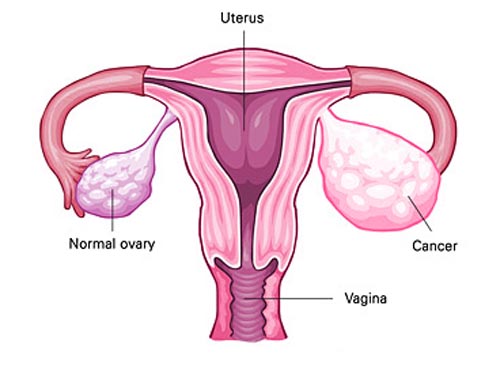Ovarian Cancer
Cancer of the ovaries is the fifth most common cause of cancer death in women. According to the American Cancer Society (ACS), the life-time risk of developing ovarian cancer is 1-71. They estimate that about 21,000 new cases are diagnosed each year in the United States and about 15,500 women die of it. Invasive ovarian cancer is a more common cause of death than the more prevalent and easily detected cancers of the uterus and cervix. Currently, less than 20% of ovarian cancers are found in the early stages before they have spread outside the ovary. The primary reason they go undetected is that the symptoms of ovarian cancer are fairly non-specific. They include: abdominal discomfort, pressure, bloating, or swelling; urinary urgency and-or change in bowel habits; pelvic pain-discomfort; loss of appetite, indigestion, gas or nausea; The ovaries, located on either side of the uterus in the lower abdomen, have two main functions: to produce estrogen and progesterone, hormones that are responsible for the development of secondary sexual characteristics and regulation of the reproductive cycle; and to develop and release an egg into the fallopian tube once a month during childbearing years. Ovarian tumors can be benign or malignant. It is not usually possible to tell whether a tumor is cancerous until the ovary has been biopsied or removed or the cancer has spread to other parts of the body. Three types of tumors are seen: epithelial tumors - about 85% of ovarian tumors begin in the epithelial cells covering the outside of the ovaries; germ cell tumors - occur in the egg-producing cells and are more often seen in younger women; stromal tumors - derive from connective tissues of the ovary that produce estrogen and progesterone; While benign tumors do not metastasize, cancerous ovarian tumors will spread if left undiagnosed and untreated - first throughout the ovary, then to the uterus, bladder, rectum, and the lining of the abdomen. Eventually, cancerous cells will reach the lymph nodes and spread throughout the body.
